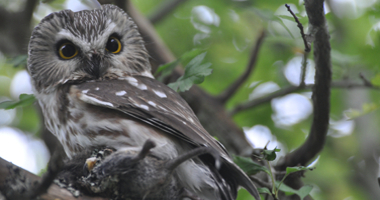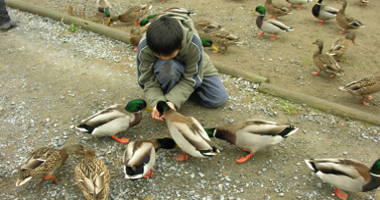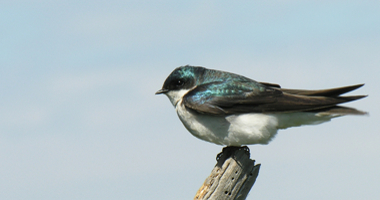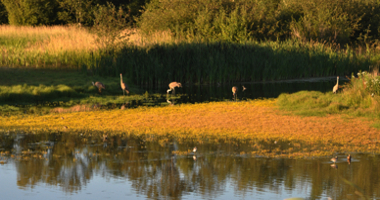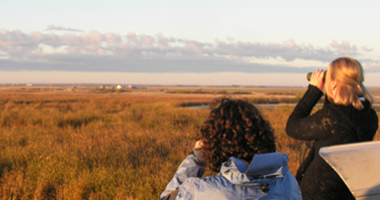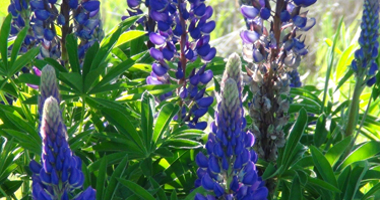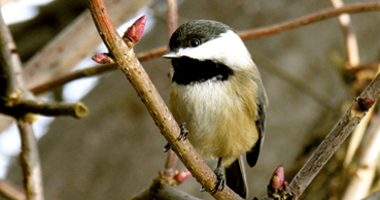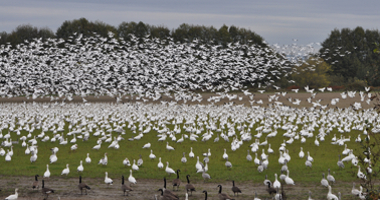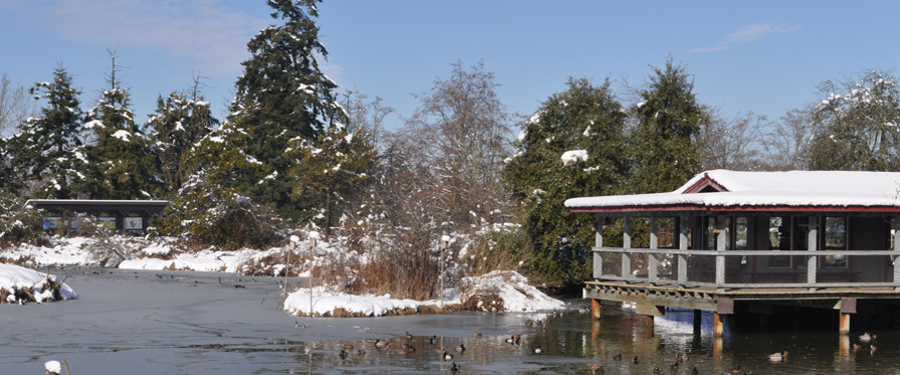What to See at the Sanctuary
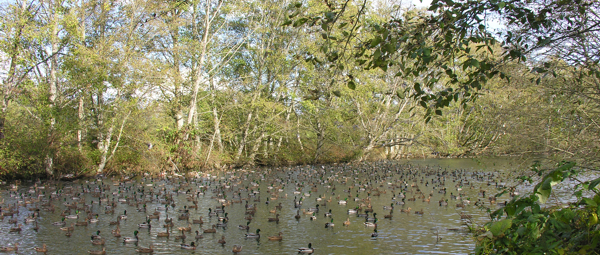
From October to early December is the best time to see large flocks of waterfowl (ducks, geese and swans) during migration as they feed and rest in the estuary and the ponds of the Sanctuary. The arrival of the "Fraser-Skagit" flock of Lesser Snow Geese draws crowds every year to see spectacular flock flights and to see the birds feeding in the marshes and farm fields around the Sanctuary. These birds migrate south from nesting grounds on Wrangel Island (Russia) each fall, and spend the winter at the Sanctuary, in surrounding parts of the Fraser River Estuary (Delta and Richmond) and in the nearby Skagit River Estuary in Washington,USA. (Read more)
The winter months are quiet in the Sanctuary, particularly when the ponds freeze over and birds and visitors alike are striving to keep warm. Highlights include the very friendly Mallards, Sandhill Cranes and Black-Capped Chickadees which will accept bird seed treats, and the diverse assortment of hawks, eagles and owls. The small Northern Saw-whet Owl is a visitor favourite (Read more), and Great Horned Owls often begin their winter courtship, with the pair often seen roosting together in the firs. River Otters are often seen in along the banks of frozen sloughs, and many diving ducks such as mergansers move in to fish in areas of open water.
By March and April, bird migration is underway again, with most of the ducks and the Snow Geese moving north, and the passage of thousands of shorebirds through the Fraser Delta. Western Sandpipers moving north to Arctic breeding grounds often stop here to feed and roost in the managed shallow ponds of the Sanctuary. Warblers also. pass through in April on their way to northern forests. Hawks, eagles, cormorants, and other fish-eating birds tend to be attacted to the mouth of the Fraser River adjacent to the Sanctuary because of runs of salmon and eulachon (a small oily fish species).
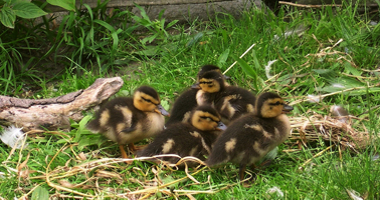
Many ducks and geese are on nests here by April, and spend the summer rearing their young and moulting and refreshing their feathers. Mallards, Gadwall and Canada Geese nest in quiet grassy areas of the Sanctuary. Sandhill Cranes, if nesting, are very interesting to watch, but visitors are warned to keep away from the resident pair, the nest site and young (Read more). American Robin, Barn Swallow, Bushtit, Marsh Wren, Red-Winged Blackbird, Gadwall, and many sparrows also nest throughout the Sanctuary, and the many nest boxes are used annually by Black-Capped Chickadees, Tree Swallows, Bewick’s Wren, House Sparrows, Wood Ducks, squirrels and assorted other wildlife. Rufous Hummingbirds feeding from the flowers and feeders are often a highlight for visitors.
In late summer and early fall, southward migrations begin, and a wide variety of arctic-nesting shorebirds visit the waters, islets and mudflats of the Sanctuary on their way south. This is a good time to view Greater and Lesser Yellowlegs, Long-billed Dowitchers, and Western Sandpipers, and to search flocks for more uncommon species. 298 species of birds have now been recorded at the Sanctuary, from the plentiful Mallard, Canada Goose and (in winter) Snow geese, to the more uncommon species such as Black-Crowned Night Heron, which can generally be seen every winter just past the Gift Shop.



